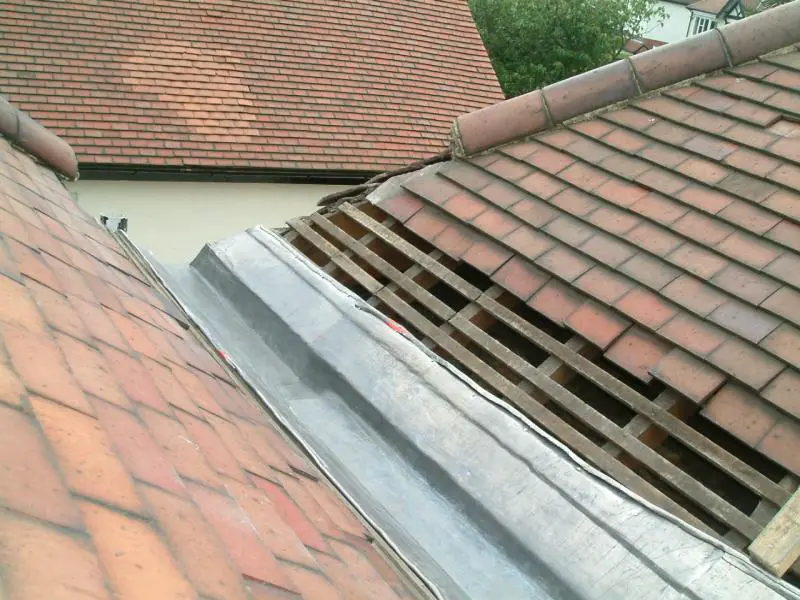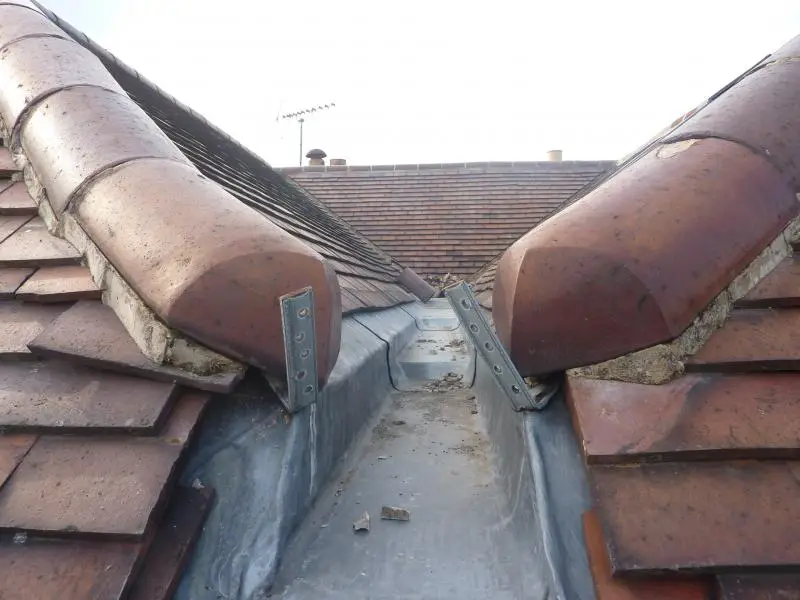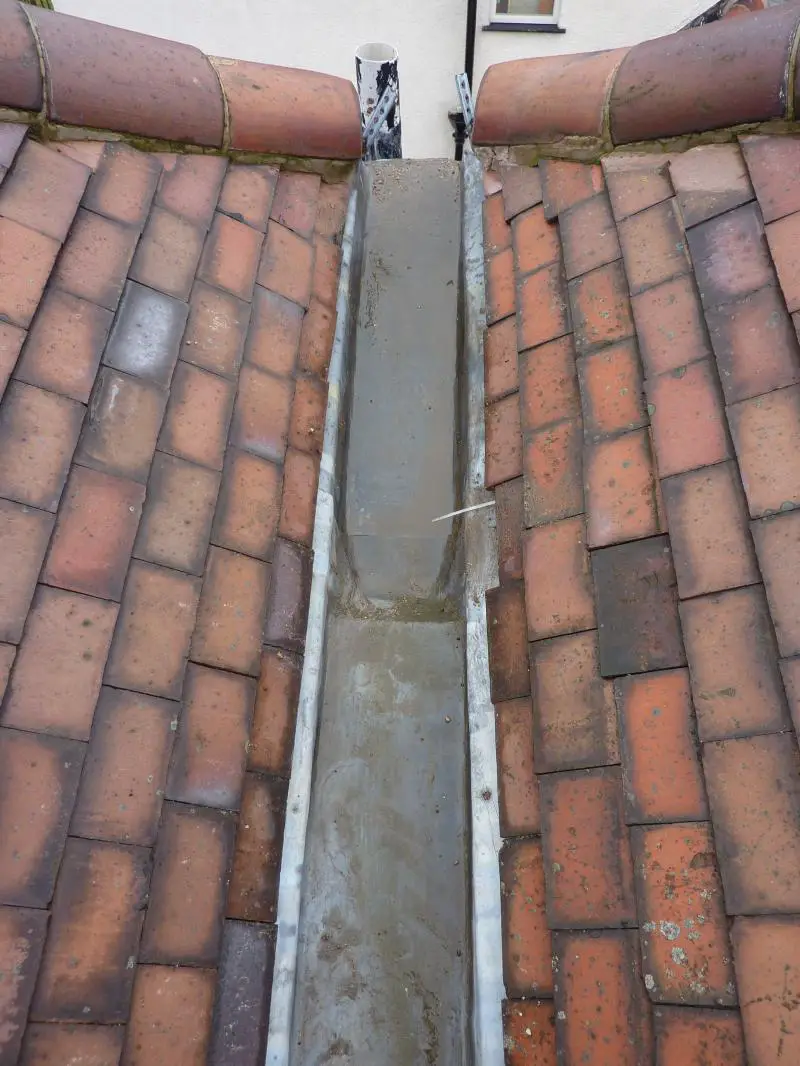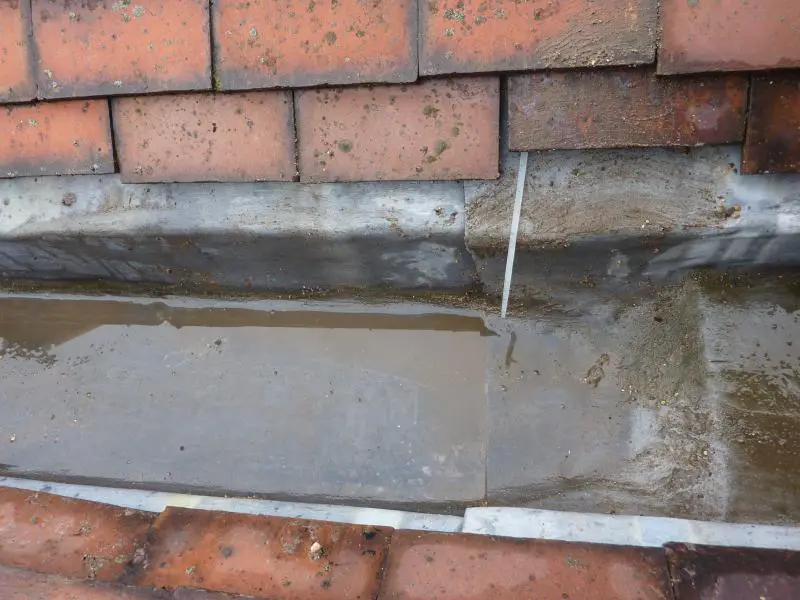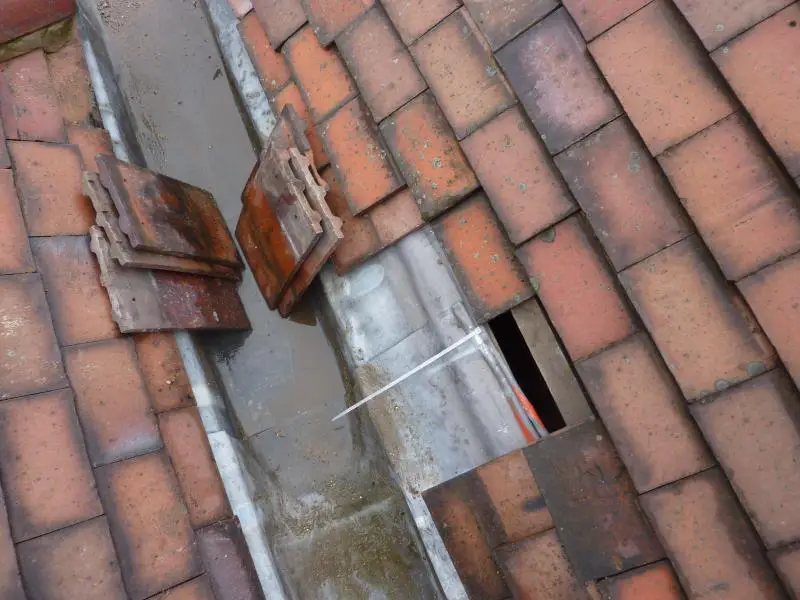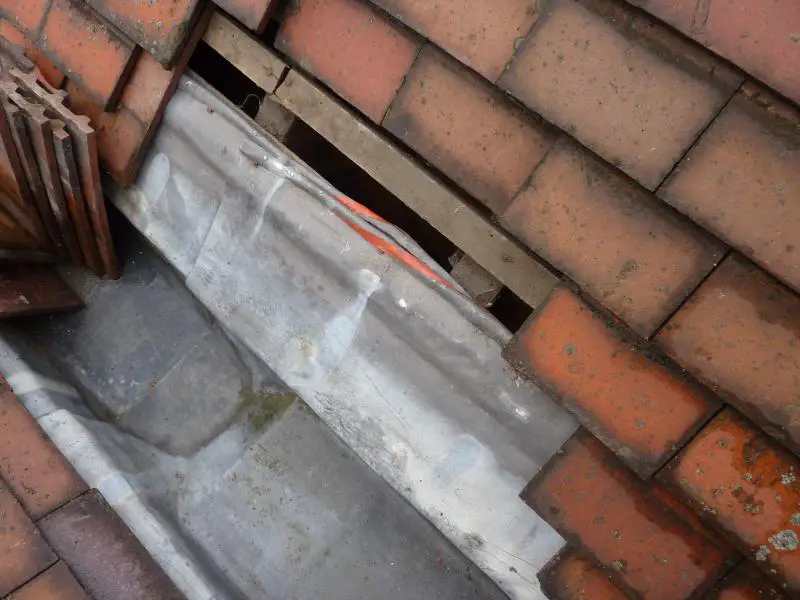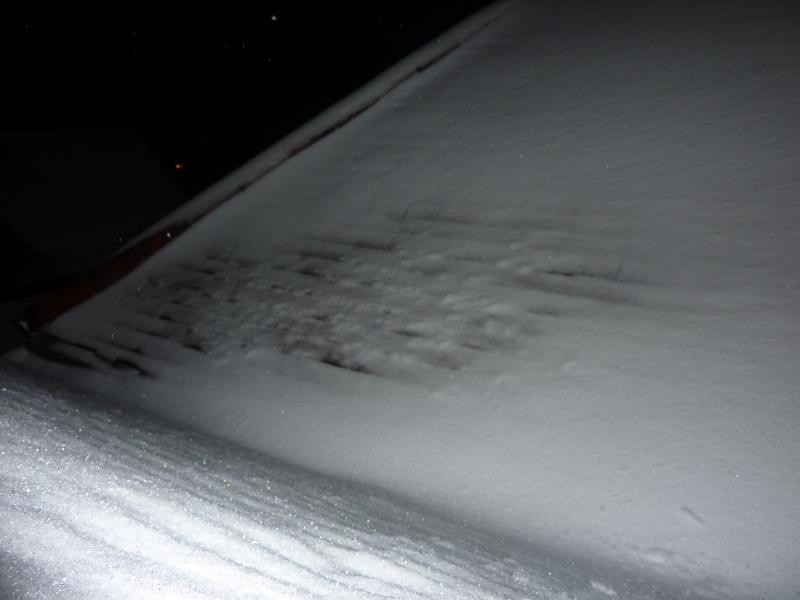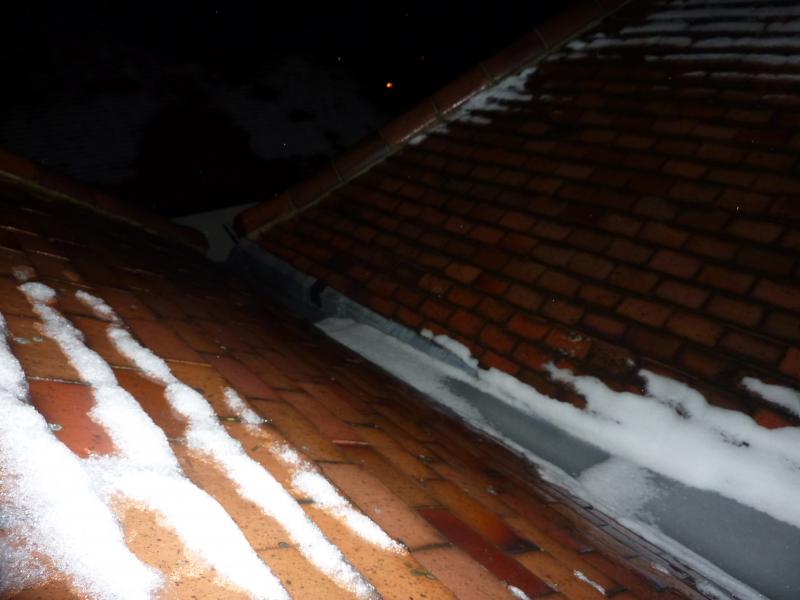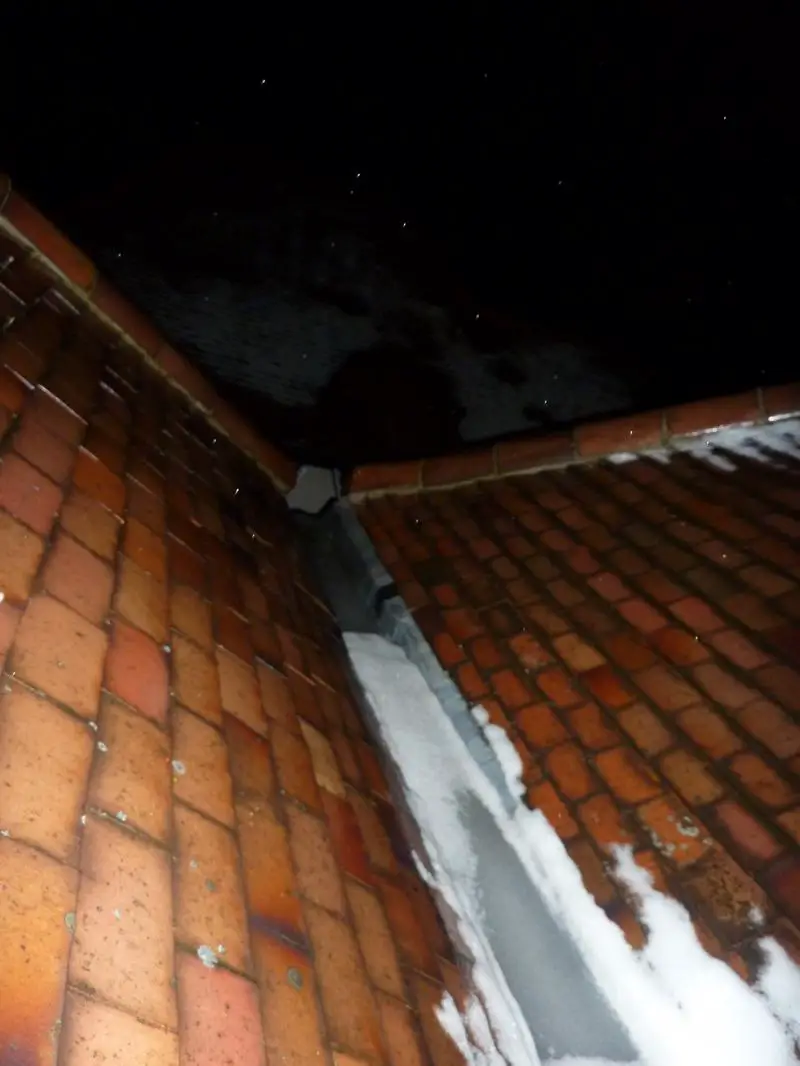In this image you can clearly see the eaves lathe disappearing as the lead creeps higher.
In the end-on image below, the bottom course of tiles stops at that ridge leaning up the roof. Then look at the next course of tiles above and it is clearly missing a full course between it and the first course.This is the left side of the gulley.
The overlap here, about a metre from the end is where the water is getting in after snow. I...
quisquose";p="2666758 said:.From the end of the gulley
Image from 2012 whilst we were having the ridge tiles rebedded


